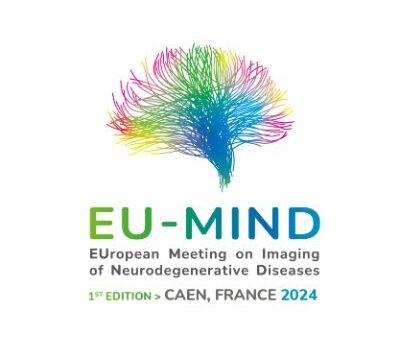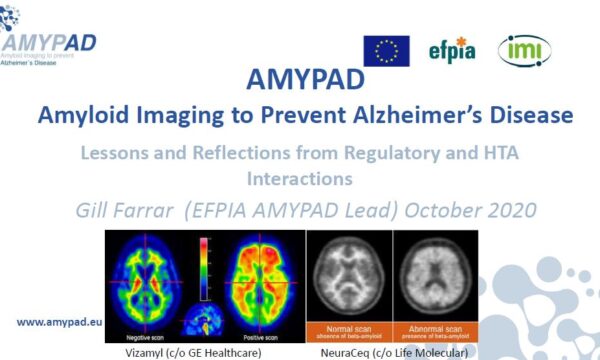What is your current role on AMYPAD?
I am a postdoctoral researcher at the Barcelonaβeta Brain Research Center, working on the study of biofluid biomarkers in the preclinical stage of Alzheimer’s disease, within the context of the ALFA study, which is focused on Alzheimer’s disease prevention.
During my PhD, from 2018 to 2020, I was involved in the EPAD project as coordinator of WP1-Scientific Challenges. Since 2020, I am also part of the AMYPAD project. In particular, I am involved in the WP4 (Risk stratification: Natural history and enrichment strategies) of the AMYPAD Prognostic and Natural History Study.
In WP4, our role is to work on the harmonization of non-imaging biomarkers, clinical and demographic data among the different parent cohorts that are part of the project. Once these data are ready and consistently harmonized, I will also be involved in the scientific analyses. Specifically, I’ll carry out a project on sex differences in the longitudinal trajectories of Amyloid PET, in comparison with biofluid biomarkers. I am also interested in studying whether the associations of Alzheimer’s disease biomarkers (both in PET and biofluids) with neurodegeneration outcomes and cognitive decline differ between sexes.
What is your overall vision?
As the field is moving towards the early detection of Alzheimer’s disease, longitudinal data on Amyloid PET imaging is needed to better understand the pathogenesis of the disease, and to model its different trajectories considering the effect of possible modifying factors. Among other implications, disentangling these questions could have an important impact on the identification of risk groups that can be more accurately addressed to potential preventive or therapeutic interventions. In this regard, the regional data that amyloid PET imaging offers is very valuable.
Moreover, a current priority in the field is the development of blood biomarkers as more accessible diagnostic tools and to optimize individuals’ screening and stratification for clinical trials. Although promising evidence is quickly arising, there is still work needed to validate these new biomarkers before they can be implemented in clinical or research settings. Validating these novel biomarkers against Aβ PET is necessary to determine their reliability to predict Aβ deposition in the brain, and therefore, to select those individuals that are more likely to have Aβ pathology or to develop it in the following years, and who can potentially benefit from intervention strategies at early disease stages.
I am confident that the AMYPAD project will provide answers to some of this relevant and timely questions in the field.
What do you find most challenging about the project?
The multi-centre nature of AMYPAD is a major strength of the project. However, it also brings along the necessity of implementing effective procedures and clear guidelines to integrate data that is usually collected or processed in different ways across different centres. Facing this reality of diverse and heterogeneous data can be challenging and requires considerable amount of effort and expertise. These challenges are addressed in WP4, as well as in other AMYPAD task forces that work on the harmonization of other variables such as neuroimaging data. This harmonization work is of high relevance to make sure that we get consistent, integrated and reliable multicentre data to perform robust analyses and provide answers to our scientific questions.



